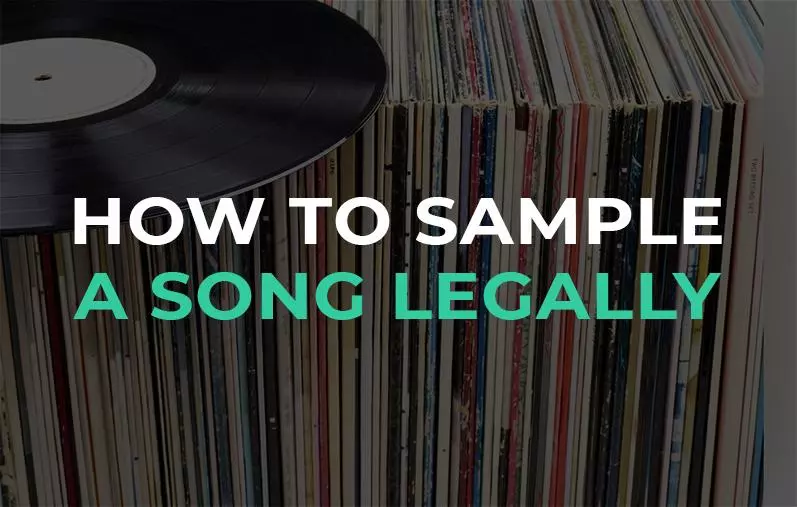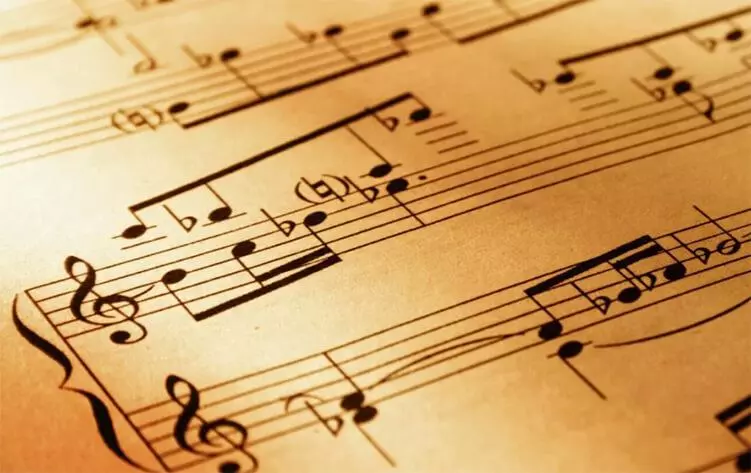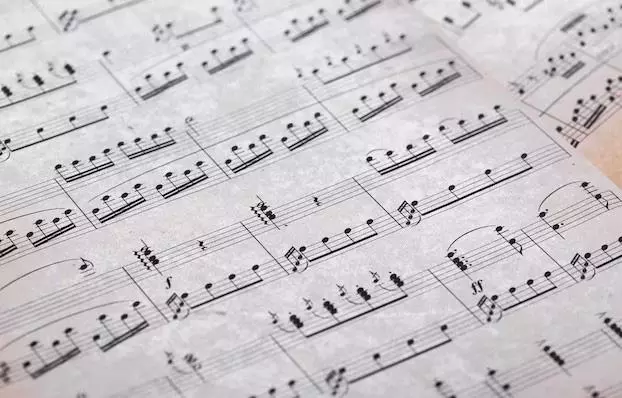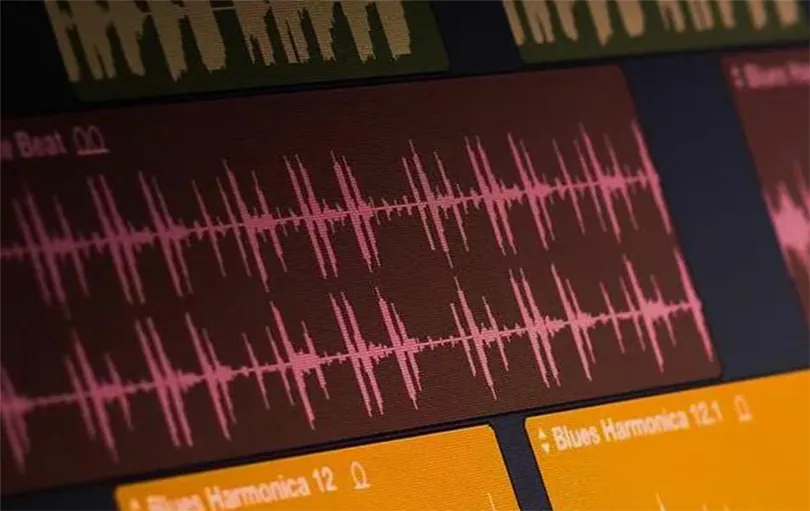What is a Suspended (SUS) Chord

Suspended chords, often labeled as “sus” in musical terminology, bring a unique color and character to a composition. Unlike traditional chords that lead to resolution and closure in a melody, suspended chords create an air of anticipation and a touch of tension, giving the music a sense of unfinished intrigue.
These chords seem to pause the expected harmonic flow, substituting familiar tones like the third with others—typically the second (sus2) or the fourth (sus4). This choice results in a sound that’s neither major nor minor, leaving the chord “suspended” in a state of harmonic ambiguity. The effect is a feeling of expectancy, as if the music is just about to resolve back into something more stable and familiar, adding a layer of emotional depth to the composition.
Types of Suspended Chords
Suspended chords are generally divided into two main types: suspended 2nd (sus2) and suspended 4th (sus4) chords. A sus2 chord, like C-sus2 or D-sus2, is created by replacing the third with the second, giving it an open, airy sound that maintains a sense of unresolved tension. In popular music, a G-sus2 chord might gently resolve back to G major, adding a subtle feeling of release and completion.
On the other hand, a sus4 chord, such as E-sus4 or F-sus4, replaces the third with the fourth, resulting in a fuller, more resonant sound, while still conveying a sense of anticipation. A classic example of the A-sus4 chord can be found in rock ballads, where it hangs at a peak of emotional intensity before resolving, adding drama and depth to the composition.
The Sus-4 Chord in Classical Music
In classical music, suspended chords, particularly the sus-4, are often used to delay resolution to the tonic chord, building intrigue and emotional anticipation. Composers skillfully set up tension, making the listener expect a resolving chord, only to prolong that moment with a suspended chord that stretches the feeling of suspense.
To create a sus-4 chord, composers replace the traditional third with the fourth. This substitution doesn’t create intense tension; instead, it keeps the sound soft and harmonious. However, the chord “hangs” unresolved, as if it’s waiting to be grounded.

In classical music, these chords are typically held for just a brief moment, heightening the listener’s sense of anticipation before finally resolving into a stable chord. While a sus chord doesn’t have the strong pull toward the tonic that a dominant chord does, it still hints at an eventual resolution. Such chords are often a tool in a composer’s technique, adding to the emotional and harmonic journey that ultimately leads to a satisfying tonic conclusion.
Suspended Chords Beyond the Basics
Beyond the familiar sus2 and sus4 chords, there are more complex suspended chord variations. Adding elements like a seventh or a ninth to a sus4 chord can create a remarkably layered sound. These advanced chords are often used in jazz and progressive rock, adding depth to a melody and transforming a simple sequence into something truly captivating and multidimensional.
Understanding the structure of these suspended chords opens up a wide range of possibilities for composers and arrangers. Such chords can act as transitions between different melodic ideas or serve as tools for introducing additional complexity into a harmonic progression.
Theory of Suspended Chords
Despite their complex sound, suspended chords are built on relatively straightforward theory. They’re typically notated with the root note followed by the chord type, “sus2” or “sus4.” For example, Dsus4 means the third is replaced by the fourth, while Dsus2 indicates it’s replaced by the second.
In sheet music, these chords follow standard chord notation, which is particularly helpful for beginners learning piano. For instance, for those studying with apps like Skoove, understanding suspended chord symbols is essential for reading and playing music that includes them.
Tension and Resolution in Suspended Chords
Suspended chords captivate listeners with their ability to create and release tension. In a typical chord progression, a suspended chord introduces an element of unresolved tension, which is usually resolved by moving to a major or minor chord. For example, a C-sus chord might resolve to C major, satisfying the listener’s expectation.
The secret behind this tension lies in the omission of the chord’s third, the note that typically defines whether a chord sounds major or minor. By removing this note and replacing it with a second or fourth, the suspended chord hovers in a state of harmonic ambiguity, keeping the listener in anticipation until the moment of resolution.
The Role of Suspended Chords in Music Theory
In music theory, suspended chords are an essential tool for composers, adding emotional depth and complexity to a composition. These chords can evoke a sense of anticipation, tension, or even a gentle, otherworldly calm. This is especially true in genres like jazz, where suspended chord progressions bring sophistication and richness to the harmony.
For those learning piano, it’s crucial to not only recognize and play suspended chords but also understand how they resolve within a harmonic context. It’s not just about practicing individual chords like a suspended E or F; it’s about seeing how each fits into the larger harmonic structure of the piece, shaping its emotional and tonal atmosphere.
The Role of Suspended Chords in Musical Composition
Classical Music: Foundations of Tension
In classical music, suspended chords are used to express a wide range of emotions—from gentle melancholy to intense tension. Composers like Bach and Mozart often incorporated suspended chords, particularly the sus4, to guide listeners through the emotional journey of a piece. A suspended D chord, as used in classical compositions, might create a moment of heightened anticipation before resolving into a peaceful D major chord, offering a sense of relief and closure.
Jazz and Modern Music: Expanding Boundaries
Jazz musicians and contemporary composers frequently use suspended chords to enrich harmony with complex variations. For example, adding a seventh or ninth to a suspended C chord brings a deep, layered sound that has become a hallmark of jazz. In modern rock and pop, sus chords are often used to add texture and drama. A suspended G chord in a rock ballad or an A sus chord in a pop song can serve as a powerful accent before a chorus, creating a memorable and dramatic effect.
Suspended Chords in Film Soundtracks
In film music, suspended chords are frequently used to set the mood and heighten emotional accents. For instance, an E-sus chord can add tension to a thriller scene, while an F-sus chord might evoke a sense of wonder in a fantasy film. These chords help underscore the scene’s atmosphere, adding harmonic depth and establishing emotional boundaries.
Suspended Chords in Progressions and Transitions
For musicians, especially pianists, understanding how to incorporate suspended chords into progressions is essential for creating anticipation and drama. In a typical ii-V-I progression, for example, the V chord can be substituted with a V-sus chord, like G-sus, adding an extra layer of tension before resolving to the I chord. This technique enhances the emotional depth of the progression, making it more expressive.
Suspended chords also play a crucial role as transitional elements within compositions, guiding listeners through different sections of a piece. For example, a composer might use a suspended D chord to create a smooth transition from verse to chorus, where the unresolved nature of the sus chord adds a hint of anticipation before the main theme unfolds.
Practical Application: Playing Suspended Chords
Techniques for Playing Suspended Chords
Mastering suspended chords involves understanding their sound across different instruments. For instance, playing C-sus or G-sus chords on the piano requires a specific finger positioning that’s different from standard chords. Beginners using learning tools like Skoove can benefit from visual guides and exercises specifically designed to familiarize them with these chord shapes.
Improvisation Tips: Working with Scales Around Suspended Chords
Improvising with suspended chords, such as D-sus or E-sus, opens up a world of creative possibilities. Pianists and guitarists can explore different scales that complement the suspended chord’s unique sound. For example, using a Mixolydian scale over a suspended chord creates a sense of movement and resolution that works perfectly for solos in jazz or rock settings.
Incorporating suspended chords into improvisation requires a trained ear and an understanding of how these chords interact within a key. Practice and experimentation, supported by resources like Skoove, are essential to mastering this skill.
Artistic Impact of Suspended Chords
Suspended chords, with their distinctive mix of tension and resolution, play a critical role in both composition and performance. They aren’t just a theoretical concept but a practical tool that musicians can use to add emotional depth and structural variety to their work.
For music students, particularly in North America and Western Europe, mastering suspended chords is a step toward more expressive and mature playing. Understanding the nuances between C-sus and G-sus on the piano, or experimenting with an E-sus chord, can enrich their sound and develop a unique style.
Ultimately, the true value of suspended chords lies in their ability to broaden a musician’s creative palette. They offer a way to experiment with musical tension and resolution, making music more dynamic and engaging. For any aspiring musician, the ability to skillfully use suspended chords is a valuable asset that not only enhances their technique but also elevates the listening experience for their audience.
The Use of Sus Chords in Jazz
Like in classical music, sus chords in jazz create a temporary feeling of suspense and delay resolution. However, unlike in classical music, this resolution often doesn’t lead to the tonic chord but rather moves toward a dominant seventh chord. This approach adds a unique jazz flavor to the progression, providing harmonic flexibility and broadening the musical palette.
Consider an example where sus chords resolve to dominant chords, moving along the circle of fifths. Here, we can see how the chord structure shifts between sus and dominant 7, following a consistent pattern: one note in the chord—typically the 4—drops to the 3, creating the transition to the dominant.

For now, don’t focus too much on the voice leading used here—we’ll come back to that later—but notice how a single note shifts between the sus chord and the following dominant chord. This simple yet effective move adds a sense of smooth but expressive motion, which is so characteristic of jazz chord progressions.
Sus Chord as a Transition in ii-V Progressions
The sus chord works well as a transition in ii-V progressions, sharing common traits with both the minor ii chord and the V7 chord. In the key of C, this relationship can be illustrated as follows:

- The ii and V-sus chords contain the same notes, except for the root;
- As previously noted, the V-sus and V7 differ by just one note: the 4, which resolves to the 3, creating the shift to the dominant.
Let’s consider an example of a ii-V progression in C using simple three-note voicings.
In the first measure of the ii-V progression, two notes move simultaneously: the seventh of the ii chord resolves to the third of the V7, and the roots also change. In the second measure, however, those same notes move one at a time, introducing a sus chord as an intermediate step. This approach adds fluidity and smoothness to the progression, enhancing the transition and creating a softer resolution.

The Lifted Chord as a Suspension Before VI (or vi)
Just as a sus chord can serve as a bridge between ii and V, it can also directly precede the V chord, even without the ii. This creates a subtle harmonic tension before the resolution, adding extra depth to the progression.

Try using this technique in any V-I cadence—it introduces a pleasant inner movement between the voices, making the sound smoother and more expressive.
Using a Sus Chord Transition in ii-V-I Progressions
By combining elements of ii-V and V-I progressions, you can transform a standard ii-V-I sequence into a smoother and more expressive ii-Vsus-V7-I cadence. This transition adds subtlety and creates an interesting harmonic pathway from the initial chord to the tonic.

To enhance the movement within the cadence, try experimenting with different extensions on the dominant seventh chord. For example, adding a G13b9 chord can bring extra depth and a rich color to the final resolution.

Other Ways to Use Sus Chords
As we know, sus chords share many characteristics with ii and V7 chords. They can not only create smooth transitions between these chords but also serve as a substitute for either one.
Try experimenting by playing some of your favorite tunes and substituting a few dominant and secondary dominant chords with sus chords. This will maintain the original feel of the piece while adding a subtle touch of freshness.
In more modern jazz, thanks to musicians like Herbie Hancock, sus chords have evolved into a standalone sound, rather than just a substitution or a part of a cadence. To hear this approach in action, listen to Maiden Voyage, where sus chords play a central role in defining the sound.
How to Voice a Sus Chord on the Piano
There are several classical and jazz techniques for voicing sus chords on the piano. Let’s start with a basic classical triad approach and then move on to more advanced jazz voicings.
Classical Approach to Voicing a Sus Chord
While this example may seem straightforward, it demonstrates how composers of the past used suspended resolutions. In classical pieces, such as Bach chorales or Beethoven sonatas, you can find similar techniques that convey a sense of anticipation before resolution.

Voicing a Sus Chord as a Slash Chord
When I first learned jazz sus chords, I was taught to approach them as slash chords. There are two main ways to voice a sus chord as a slash chord, and while they differ slightly, they have a similar sound:
- Play the root of the sus chord in your left hand and a major triad a whole step below in your right hand (e.g., G in the bass and an F major triad);
- Play the root of the sus chord in your left hand and a minor seventh chord a fifth below in your right hand (e.g., G in the bass and D-7 in the right hand).
For a richer sound, you can substitute the root in the left hand with a dominant seventh chord. This creates a fuller, poly-chordal version of the slash chord, adding volume and depth to the chord.

Which Scale to Use Over a Sus Chord
There are several approaches for improvising over sus chords. Using arpeggios and different scales can help you unlock the harmonic richness of these chords. It’s important to emphasize the 4th resolving to the 3rd to give your lines a sense of motion.
Primary Scales for Sus Chords
- Major Modes: Choose a mode based on the chord that your sus chord resolves to. For example: If Csus resolves to Cmaj7, use the Ionian mode (major scale). If Gsus resolves to G7, use the Mixolydian mode;
- Substitutions: When a sus chord is used as a substitute for another chord, try using a scale that also fits the original chord. This can add variety and depth to your sound;
- Pentatonic Scale: Try a major pentatonic scale that starts a fourth above the root of your sus chord. However, be careful with using the major pentatonic based on the root, as it includes the major third.
As you get comfortable with these techniques, sus chords will bring movement and variety to your playing. Practice with different scales and arpeggios until you’re fluent with them—this will help you create refined cadences and give your lines a more elegant sound.










